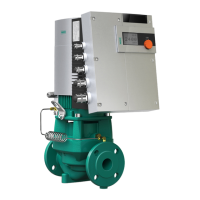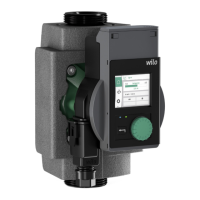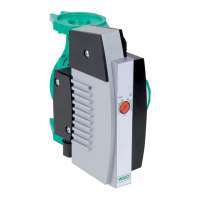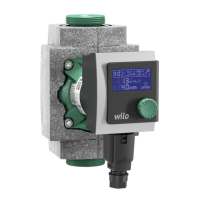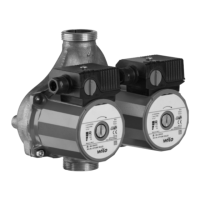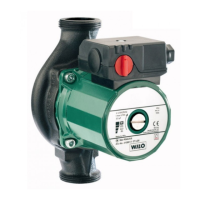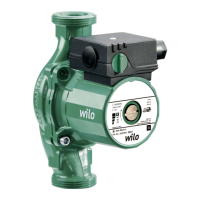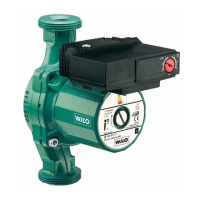English
58 WILO SE 10/2013
"Cooling/air-conditioning" operating mode:
For all applications for which each fault (in the pump or the system) needs be
detected quickly (e.g. air-conditioning applications).
Each fault, with the exception of the E10 fault (blocking) is indicated immedi-
ately (< 2 sec.). In the event of blocking (E10), various restart attempts will be
carried out, which means that in such cases no fault signal will occur until after
a maximum of 40 sec.
See Chapter 10.2 and flow diagram - fault / warning signal during
"AC operation".
Both operating modes distinguish between faults and warnings. In the event of
a fault, the motor is switched off, the fault code is displayed on the monitor and
the fault is indicated by the red LED.
Faults always result in the activation of the SSM ("collective fault signal" via a
relay).
In the case of dual pump management (double pump or 2x single pumps), the
standby pump starts within the time period specified below following the
occurrence of the fault.
6.2.2 Differential pressure control modes
• p-v: The electronics change the differential pressure setpoint to be main-
tained by the pump in linear form between ½H
S
and H
S
. The differential pressure
setpoint H falls or increases with the flow rate (Fig. 8), factory setting.
• p-c: The electronics maintain the differential pressure created by the pump
above the permitted flow range constantly at the selected differential pressure
setpoint H
S
up to the maximum pump curve (Fig. 9).
• p-T: The electronics change the differential pressure setpoint to be main-
tained by the pump according to the measured fluid temperature. This control
mode can only be selected with an IR operating and service unit (accessory) or
via PLR/LON/CAN/Modbus/BACnet. Two settings are possible (Fig. 10):
• Control with positive increase:
If the temperature of the fluid is increased, the differential pressure setpoint
is increased in linear form between H
Smin
and H
Smax
(setting: H
Smax
> H
Smin
).
• Control with negative increase:
If the temperature of the fluid is increased, the differential pressure setpoint
is reduced in linear form between H
Smin
and H
Smax
(setting: H
Smax
< H
Smin
).
Stratos, Stratos-D, Stratos-Z, Stratos-ZD Starting time
25/1-4, 25/1-6, 25/1-8, 30/1-4, 30/1-6, 30/1-8, 32/1-8, 40/1-4 approx. 9 sec.
25/1-10, 30/1-10, 32/1-10, 40/1-10, 50/1-10, 50/1-16, 65/1-16,
80/1-12, 100/1-12
approx. 7 sec.
40/1-12, 50/1-9, 50/1-12, 65/1-9 approx. 4 sec.
30/1-12, 32/1-12, 40/1-8, 40/1-16, 50/1-8, 65/1-12 approx. 3 sec.
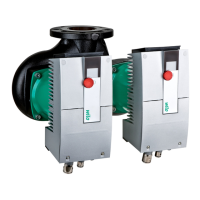
